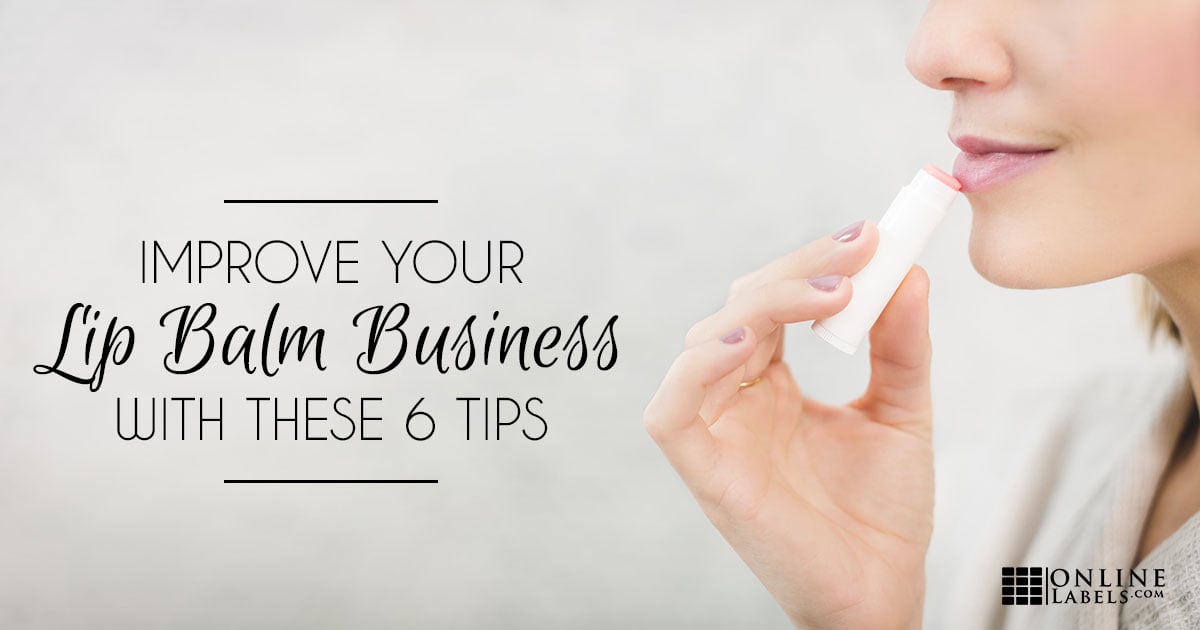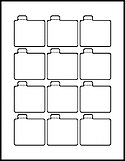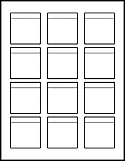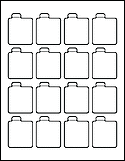Improve Your Lip Balm Business With These 6 Tips

For many people, lip balm is an everyday product. If you're a lip balm maker, the changing consumer landscape toward natural, organic, and local products tips the scales in your favor. But with so many large and small businesses in the lip balm and beauty market, it can be hard to get your product recognized.
If your listings blend in on oversaturated marketplaces, photographs don't stand out, or sales aren't where you want them, consider these tips to come out on top.
Looking for lip balm labels? Check out our selection and find the right size for you!
1. Understand Lip Balm Ingredients
It's a common misconception that lip balms add moisture. In reality, they seal your lips to protect them from losing moisture. In order to create the best lip protectant, it's important to use a combination of occlusive agents and emollients in your recipe.
Occlusive ingredients physically prevent water loss. Petrolatum is the most effective, according to The Dermatologist Magazine, which explains its popular use among DIY lip balm makers.
Emollients are what provide the comforting feeling of well moisturized skin.
Together, these ingredients include lanolin, shea butter, petroleum, paraffin, beeswax, coconut oil, cetearyl alcohol, and avocado oil. Below, hear from popular lip balm sellers on their favorite ingredients:
Caleb Backe, Health & Wellness Expert for Maple Holistics
"My favorite ingredients are beeswax, coconut oil, and aloe vera. Beeswax is a natural emollient that locks in the skin’s hydration. It creates a breathable yet protective layer on the skin's surface to nourish the skin from within. It also contains antibacterial and anti-inflammatory benefits to soothe irritated lips.
Coconut oil is known to help reduce moisture loss in the skin. It’s rich in Vitamin E, which makes it a great moisturizing agent that encourages skin to renew and regenerate.
Aloe vera is touted not only for its moisturizing qualities but also its remarkable healing properties. It accelerates wound healing and speeds up cell reproduction, which makes it a great ingredient to heal chapped lips."
Monica Mizzi, Editor In Chief for WellMe
"My favorite ingredient to use in lip balm recipes is avocado oil. In my job, I come across many interesting natural ingredients to add to women's skin care routines, but I must say, I was particularly intrigued to learn about just how powerful avocado oil is as a skin elixir! I always add it the the lip balm I make at home. Not only does it provide relief for chapped lips, it's also natural and delicious smelling."
Alyssa Barnes, Owner of Down to Earth Alquimia
"My favorite ingredients to use for lip balm are coconut oil, beeswax, and shea butter or cocoa butter. Coconut oil is easily accessible and I prefer the unrefined oil because it has more nutritive properties and retains the smell of coconut. You can use more to make a glossier balm.
Beeswax is fantastic for giving the lip balm the firmness that it needs. Cocoa butter has an incredible, rich, chocolate aroma, is totally natural, and is super moisturizing. Shea butter is similar, but it is less firm, and does not smell as nice. Both the butters are very emollient and definitely make for soft lips. I find that customers prefer a balm that is not too glossy, so I make sure my ratios of wax to butter to oil are well balanced."
2. Choose A Premium Label
We offer a variety of shape and size labels so you can create custom labels for any lip balm tube, tin, or container. Once you know your container type and measurements, shop our lip balm labels to find the perfect fit.
We've even created labels designed exclusively for lip balm, they include a safety seal for tamper-resistance and freshness. We offer three lip balm label configurations with safety seals:
3. Design Your Label
The first thing customers notice is your branding and label, so make it count. With lip balm tubes, you're designing for a small, narrow space. With that in mind, pay special attention to the following tips.
The colors you use in your branding and packaging can evoke different emotions and alter the perceived value of your product and brand. When choosing how to design your lip balm packaging, spend a little extra time on color. Darker colors are often perceived as more luxurious or professional, while lighter colors can exude a more fun or lighthearted feeling.
Most brand-name lip balm labels opt for horizontal designs so consumers can read all the information at once. If you design with vertical text, you can only see a fraction of the content at a time and need to turn the tube to digest it all. Before you get started, make a conscious choice whether or not to rotate your label.
While the design matters, don't skimp on content. Your lip balm label design should include your company logo and website, a list of ingredients, a location for where it's made, the weight/net quantity, the flavor/scent, and use and storage instructions.
A common mistake with DIY lip balm is the label overlap. Most of our lip balm labels include some degree of overlap on the end. This is intentional – the tight curvature of lip balm tubes can make it difficult for labels to adhere and sticking the label to itself helps with unpeeling (in addition to labels with a stronger adhesive like our weatherproof label line). Make sure you create your design with this in mind! End any borders early and keep text out of that space.
Don't forget about the cap. The lid of your lip balm tube is the perfect place to reinforce your brand or indicate the flavor/scent/color. It's still a part of your branding, though, so make sure it matches the style of your primary label.
Browse our library of pre-designed lip balm templates for inspiration or a jumping off point.
4. Photograph Your Product
With such a small product, you don't want anything distracting in your shot. Depending on your brand style, try staging your balm against neutrals or solid blocks of color. While the focal point should always be on your product, consider adding other visually stimulating pieces, too. Trinkets, other products, bowls, mats, representations of flavor, etc. all help add dimension and relatability to your image.
If you're incorporating tint, shimmer, or gloss into your lip balm, don't be afraid to show that in your photos! Apply your balm in a line on your inner arm to illustrate what it will look like on your customers (this is called swatch testing).
5. Write Your Product Listings
Your images will pique intrigue, but your words need to sell your product. Don't miss the opportunity to craft engaging copy for your product listings. Keep the following tips in mind when crafting your product descriptions:
Make it easy for customers to visualize
Write so they can visualize themselves using/wearing your product while reading your descriptions. You can do so by using "you" and other customer-centric language in your descriptions.
Describe the color and characteristics in detail
Pictures are there to assist with this one, but your product can look different screen-to-screen. Help the customer visualize your product and confirm it's what they're looking for.
List the scent or flavor
Is it strong or faint, familiar or something new and exciting?
Mention your ingredients
Natural, organic, and handmade a big buzzwords right now. Customers want to know what's in the products they're putting on their body. If any of your customers have allergies, this could be the deciding factor between you and another brand that doesn't list these details. (Don't forget to talk about the benefits of each ingredient!)
Include your selling proposition
Why is your product better than all the others? Convince customers why they should chose you.
While customers come first and you should cater your writing to them, keep in mind that Google and other search engines (like Etsy) crawl your product listings. This is also known as search engine optimization (SEO). To ensure you show up in search results, fill in the keywords section in the Etsy Shop Manager. What would you type into Google to find the best lip balm for your needs? It's likely that others will search using similar keywords, so add those. (Not sure where to start? We like EtsyRank for keyword research!)
6. Brand Your Packaging
The customer has solely interacted with your brand online until delivery. Your shipping box is their first tangible experience with your company, so make it count. Put thought into choosing the right envelope, tube, or box for your products and brand. Don't reuse packaging or old boxes — use high-quality materials to ensure safe delivery.
Once it's all secured, give it a little custom flair. Add a sticker of your logo to the box for brand building, include contact information labels for quick help, or leave ‘thank you' stickers for the recipient.
You've taken all the right steps to launch a successful handmade lip balm business. With an approachable brand that resonates with its intended audience – plus good photos, content, and more – customers will find you.
Need new and improved labels? Shop lip balm labels today, or check out our guide on How to Make Lip Balm Labels.





